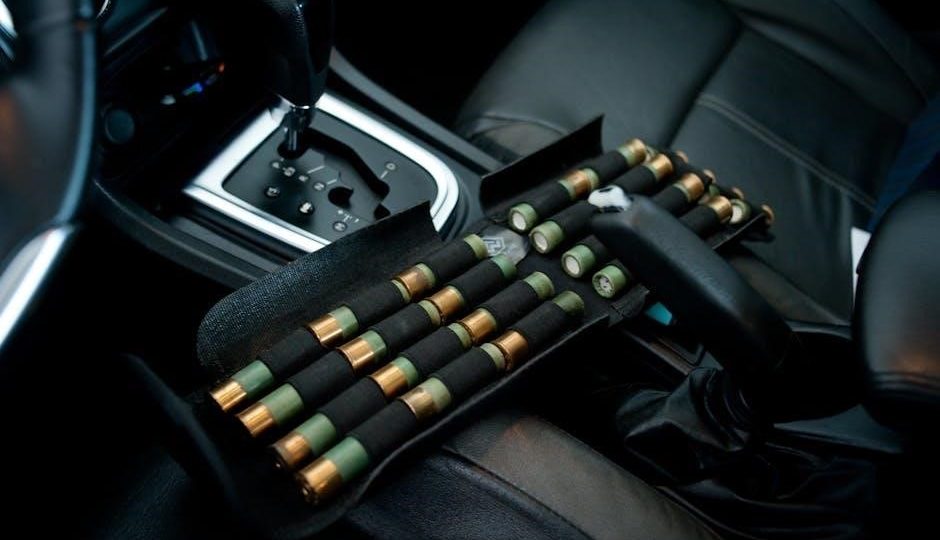The Honda Prelude’s manual transmission offers a sporty driving experience, enhancing driver-car connection with precise control and a responsive feel, beloved by enthusiasts for its performance and handling.
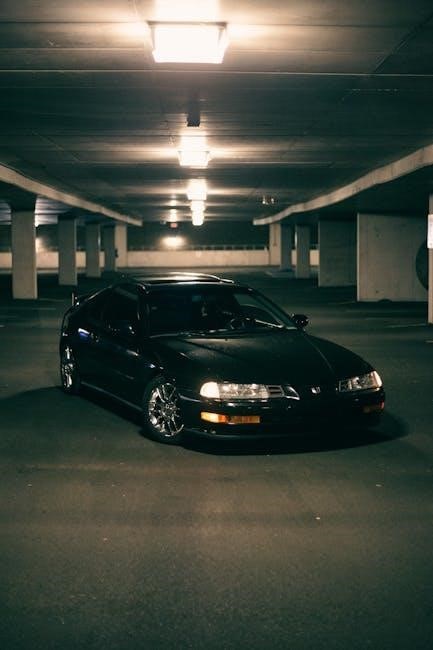
1.1 Overview of the Honda Prelude
The Honda Prelude is a two-door coupe known for its sporty design, reliable performance, and advanced features for its time. Produced from 1978 to 2001, it became a favorite among driving enthusiasts due to its balance of power, handling, and style. The Prelude featured a range of engine options, including fuel-efficient and high-performance variants, catering to diverse driver preferences. Its manual transmission models were particularly praised for their precise gear shifts and driver engagement, making it a standout choice for those who valued a hands-on driving experience. Over its five generations, the Prelude evolved to incorporate modern technologies while maintaining its reputation as a versatile and enjoyable vehicle.
1.2 Importance of Manual Transmission in the Honda Prelude
The manual transmission in the Honda Prelude played a pivotal role in its driving experience, offering precise control and a sporty feel that resonated with enthusiasts. It allowed drivers to fully engage with the vehicle, maximizing acceleration and handling capabilities. The manual gearbox was particularly praised for its smooth shifting and responsiveness, making it a key feature for those who valued performance and driver involvement. Additionally, the manual transmission contributed to the Prelude’s reputation as a driver-focused car, appealing to those who sought a more connected and immersive experience behind the wheel. Its presence became a defining characteristic of the model’s identity and enthusiast appeal.
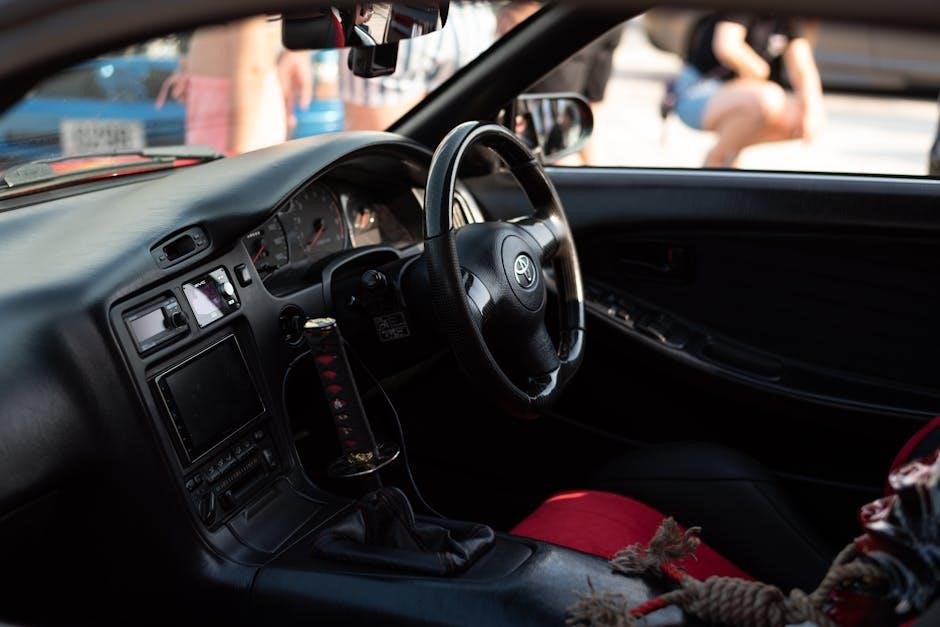
History of the Honda Prelude
The Honda Prelude debuted in 1978 as a sporty coupe, evolving over five generations until 2001. It combined sleek design, advanced tech, and performance, with the manual transmission enhancing its driving appeal;
2.1 First Generation (1978-1982)
The first-generation Honda Prelude, introduced in 1978, marked the debut of this iconic coupe. It featured a sleek design, a fuel-efficient 1.8L engine, and a 5-speed manual transmission, emphasizing sporty handling and driver engagement. The manual transmission became a hallmark of the Prelude, offering precise control and a connected driving experience. Early models were well-received for their balance of performance and reliability. The first-gen Prelude laid the foundation for its successors, establishing it as a standout in the compact coupe segment with its blend of style, efficiency, and driving dynamics.
2.2 Second Generation (1982-1987)
The second-generation Honda Prelude, produced from 1982 to 1987, featured a more refined design and improved performance. It boasted a 1.8L to 2.0L engine range, delivering up to 110 horsepower, paired with a smooth 5-speed manual transmission. This generation introduced Honda’s innovative “Dual-Pinion” steering system, enhancing handling precision. The manual transmission remained a key feature, offering crisp shifts and driver engagement. With its sporty yet practical appeal, the second-gen Prelude gained popularity among enthusiasts, blending efficiency with exhilarating driving dynamics. Its reputation for reliability and performance solidified the Prelude’s place in the compact coupe market during this era.
2.3 Third Generation (1987-1991)
The third-generation Honda Prelude, spanning from 1987 to 1991, marked a significant leap in innovation. It introduced Honda’s groundbreaking 4-wheel steering (4WS) system, enhancing agility and control. The engine lineup included a 2.0L DOHC, producing up to 135 horsepower, paired with a refined 5-speed manual transmission. This generation emphasized sportiness and precision, with improved suspension setups and aerodynamic designs. The manual transmission remained central to the driving experience, offering crisp shifts and a direct connection to the road. Its balance of performance and reliability made the third-gen Prelude a favorite among driving enthusiasts, solidifying its reputation as a dynamic and engaging coupe.
2.4 Fourth Generation (1991-1996)
The fourth-generation Honda Prelude (1991-1996) introduced a more aerodynamic and rounded design, with a focus on refinement and performance. It featured a 2.2L or 2.3L DOHC VTEC engine, delivering up to 190 horsepower. The 5-speed manual transmission remained a hallmark, offering smooth and precise shifts. This generation saw improvements in handling, thanks to a refined suspension system and optional anti-lock braking (ABS). The SH model introduced Honda’s Active Torque Transfer System (ATTS), enhancing traction and stability. With its balance of power and reliability, the fourth-gen Prelude became a sought-after choice for enthusiasts, blending sporty dynamics with everyday practicality. Its legacy as a driver-focused coupe endured, making it a standout in its class.
2.5 Fifth Generation (1996-2001)
The fifth-generation Honda Prelude (1996-2001) marked the final iteration of the model, featuring a sleek, aerodynamic design. It boasted a range of engines, including a 2.2L and 2.3L DOHC VTEC, delivering up to 200 horsepower. The Type SH model introduced an advanced Active Torque Transfer System (ATTS), improving traction and stability. The 5-speed manual transmission remained a key feature, offering precise control and enhancing the driving experience. ABS became standard across all models, enhancing safety. This generation was praised for its refined handling and sporty appeal, making it a favorite among enthusiasts. The 1999-2001 models, with their 5-speed manual transmissions, are particularly sought after for their performance and reliability, solidifying the Prelude’s legacy as a driver-focused coupe.
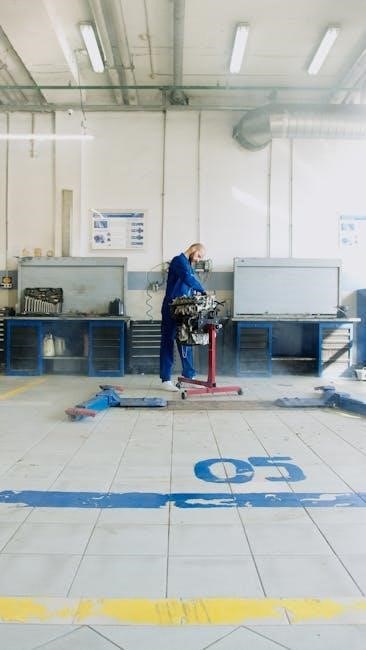
Manual Transmission Specifics
The Honda Prelude’s manual transmission features a 5-speed gearbox, known for smooth shifting and driver engagement, enhancing overall driving dynamics and performance capabilities.
3.1 Types of Manual Transmissions Used in the Honda Prelude
The Honda Prelude utilized various manual transmissions across its generations, including the S200, S500, and S600 models. These transmissions were designed to optimize performance, fuel efficiency, and driver engagement. Earlier models featured a 5-speed manual gearbox, while later generations incorporated advanced features like close-ratio gearing for improved acceleration. The S200 was particularly noted for its smooth shifting and durability, making it a favorite among enthusiasts. Each transmission type was tailored to complement the engine’s capabilities, ensuring a balanced and responsive driving experience. This variety allowed the Prelude to cater to different driving preferences and performance needs over the years.
3.2 Key Features of the Manual Transmission
The Honda Prelude’s manual transmission is renowned for its smooth shifting and precise control. Key features include a lightweight design, close-ratio gearing for enhanced acceleration, and a synchronized gear system that ensures seamless transitions. The transmission’s compact layout minimizes power loss, while its robust construction withstands high-performance demands. Advanced models incorporated features like a hydraulic clutch system for a responsive feel. These elements combined to deliver a driving experience that balanced sportiness with everyday practicality, making the Prelude a favorite among both commuters and driving enthusiasts. The manual transmission’s reliability and performance contributed significantly to the car’s reputation as a versatile and engaging vehicle.
3.3 Comparison of Manual vs. Automatic Transmission in the Prelude
The Honda Prelude’s manual transmission offers a more engaging and sporty driving experience compared to the automatic. With manual, drivers enjoy precise control, quicker acceleration, and better fuel efficiency. The automatic, while convenient, lacks the direct connection and typically has higher fuel consumption. Manual transmissions also weigh less and cost less to maintain. Enthusiasts favor the manual for its performance edge, while the automatic appeals to those prioritizing comfort. Both options provide reliable performance, but the manual stands out for its driving dynamics and cost-effectiveness, making it a preferred choice for those seeking an authentic driving experience in the Honda Prelude.
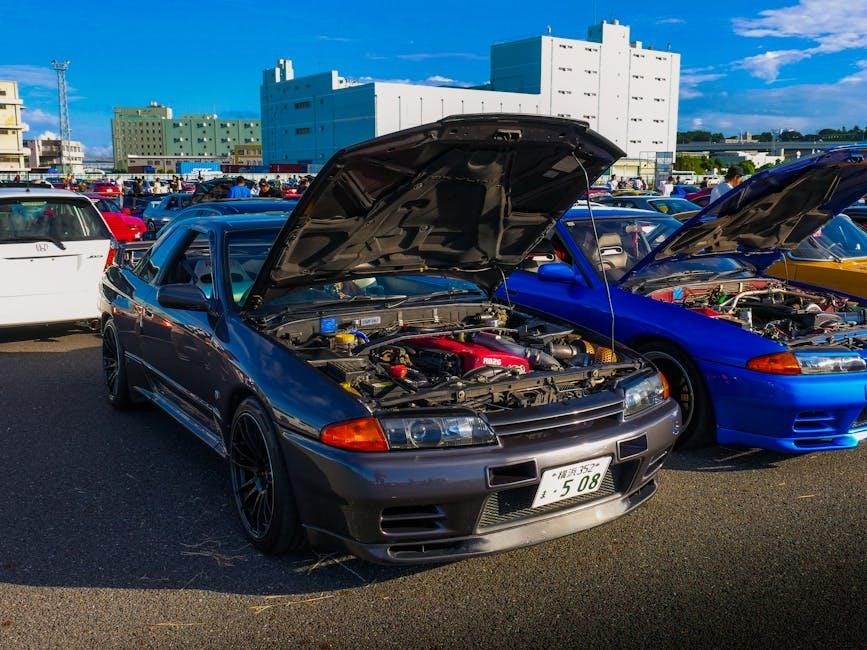
Maintenance and Repair
Regular maintenance is crucial for the Honda Prelude’s manual transmission, ensuring longevity and performance. Key areas include fluid checks, clutch health, and gear inspection. Addressing issues early prevents major repairs.
4.1 Regular Maintenance for the Manual Transmission
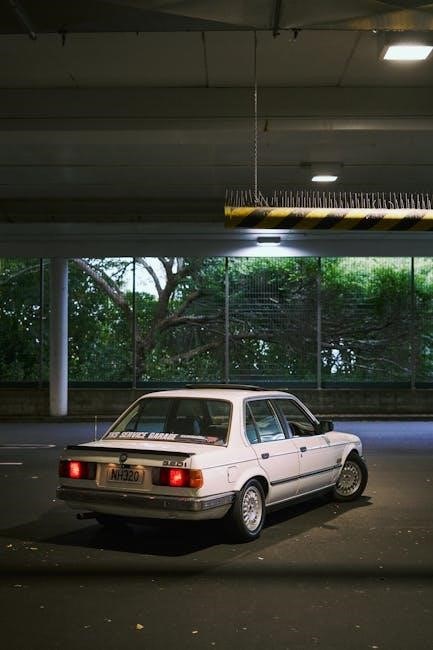
Regular maintenance is essential to ensure the longevity and smooth operation of the Honda Prelude’s manual transmission. Key tasks include checking transmission fluid levels and condition, inspecting the clutch for wear, and monitoring gear function. Ensuring proper lubrication and addressing any unusual noises or vibrations early can prevent major repairs. Additionally, users should avoid aggressive driving and extreme temperatures to maintain optimal performance. Regular inspections and timely addressing of issues help preserve the transmission’s health and reliability over time, ensuring a seamless driving experience.
4.2 Common Issues with the Manual Transmission
Common issues with the Honda Prelude’s manual transmission include worn clutch components, gear grinding due to synchronizer wear, and fluid leaks from the transmission case. Drivers may also experience difficulty shifting gears, particularly in cold weather or with high mileage. The fifth and sixth generations are known to have specific issues with the transmission’s bearing and fork wear. Aggressive driving or improper clutch engagement can exacerbate these problems. Regular inspections and addressing symptoms early can prevent costly repairs. Owners often recommend replacing the clutch and flywheel around 80,000 to 100,000 miles to maintain smooth operation and avoid further damage.
4.3 DIY Repair Tips for the Manual Transmission
DIY repairs for the Honda Prelude’s manual transmission can save costs and enhance understanding. Start with basic tools and a clean workspace. Replacing the clutch and flywheel is common, requiring care to align components properly. Always use OEM or high-quality aftermarket parts to ensure durability. Check transmission fluid levels regularly and replace it every 30,000 miles to maintain smooth operation. For gear grinding issues, inspect and clean the shift linkage or replace worn bushings. Synchronizer repair kits are available for DIY fixes, though disassembly requires patience. Online forums and repair guides provide step-by-step instructions. Regular maintenance, such as inspecting seals and gaskets, can prevent major issues down the road.
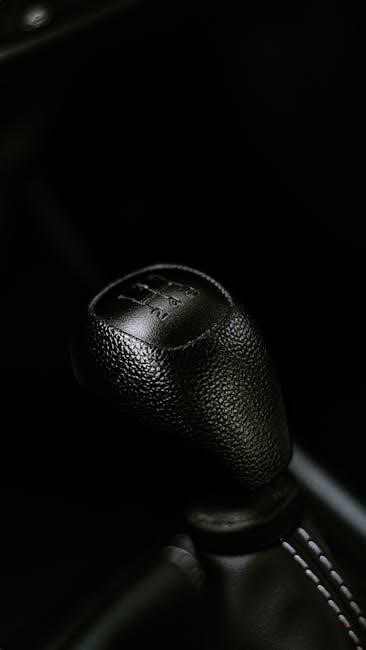
Performance and Handling
The Honda Prelude’s manual transmission enhances performance and handling, offering precise gear control and responsive acceleration, making it a joy for drivers seeking an engaging experience.
5.1 Acceleration and Speed Capabilities
The Honda Prelude’s manual transmission delivers exceptional acceleration and speed, with smooth shifts enabling quick power delivery. Its lightweight design and optimized gearing allow drivers to maximize performance, achieving impressive acceleration from 0-60 mph in under 7 seconds for later models. The precise control offered by the manual gearbox enhances throttle response, making it ideal for both city driving and highway cruising. Additionally, the Prelude’s aerodynamic design contributes to its ability to reach higher speeds efficiently, ensuring a balanced blend of power and agility that appeals to driving enthusiasts.
5.2 Handling and Suspension Setup
The Honda Prelude features a refined suspension system designed for balanced handling and ride comfort. Its double-wishbone front and rear suspension provides precise control and stability, particularly in cornering scenarios. The manual transmission models are often praised for their sport-tuned suspension, offering a firmer ride that enhances driver feedback. Models equipped with 4-wheel steering (4WS) deliver superior agility and reduced understeer, while 2WS versions maintain a more traditional handling feel. The suspension setup is complemented by responsive steering, making the Prelude a joy to drive on both winding roads and straight highways, ensuring a dynamic and engaging experience behind the wheel.
5.3 Manual Transmission’s Role in Performance
The manual transmission in the Honda Prelude plays a crucial role in its performance, offering precise control over acceleration and gear shifts. By allowing drivers to manually select gears, it enhances throttle response and provides a more direct connection to the engine’s power delivery. The manual transmission’s lightweight design and optimized gearing contribute to improved fuel efficiency and a sportier driving experience. Its ability to hold lower gears during cornering ensures better traction and stability, making it a preferred choice for enthusiasts seeking a dynamic and engaging ride. This setup complements the Prelude’s handling capabilities, delivering a balanced blend of power and precision.

Buying a Used Honda Prelude with Manual Transmission
When purchasing a used Honda Prelude with a manual transmission, focus on model years 1999-2001 for optimal performance. Ensure the transmission is in good condition, avoid heavily modified cars, and consider a pre-purchase inspection for reliability.
6.1 What to Look for When Purchasing a Used Model
When buying a used Honda Prelude with a manual transmission, inspect the vehicle thoroughly. Check the transmission for smooth shifting and any signs of wear or leaks. Ensure the clutch engages properly and shows consistent performance. Look for model years 1999-2001, as they are often considered the best for manual transmission models. Avoid heavily modified cars, as they may have reliability issues. Verify the suspension and handling, as these are key features of the Prelude. Review maintenance records to ensure regular servicing. Test drive the car to assess acceleration and handling, and consider a pre-purchase inspection for peace of mind.
6.2 Best Years to Consider for Purchase
The 1999-2001 Honda Preludes are often regarded as the best years for purchasing a used model with a manual transmission. These years offer a refined driving experience, combining improved performance and reliability. The fifth-generation Preludes feature enhanced suspension setups and engine efficiency, making them a favorite among enthusiasts. Additionally, these models tend to have fewer mechanical issues compared to earlier generations, ensuring lower maintenance costs. With a strong aftermarket support and active enthusiast communities, parts availability and expert advice are readily accessible. These factors make the 1999-2001 Preludes a desirable choice for those seeking a reliable and enjoyable driving experience.
6.3 Avoiding Common Pitfalls
When purchasing a used Honda Prelude with a manual transmission, it’s essential to avoid common pitfalls to ensure a reliable purchase. Inspect for signs of excessive wear, such as dried seals or outdated maintenance, which may indicate neglected repairs. Avoid heavily modified vehicles, as they can introduce unforeseen issues and higher costs. Prioritize models with minimal aftermarket alterations, as stock configurations often prove more reliable. Additionally, verify the vehicle’s history to ensure it hasn’t been involved in major accidents or had critical components replaced. A thorough inspection and test drive are crucial to identify any hidden problems before finalizing the purchase.
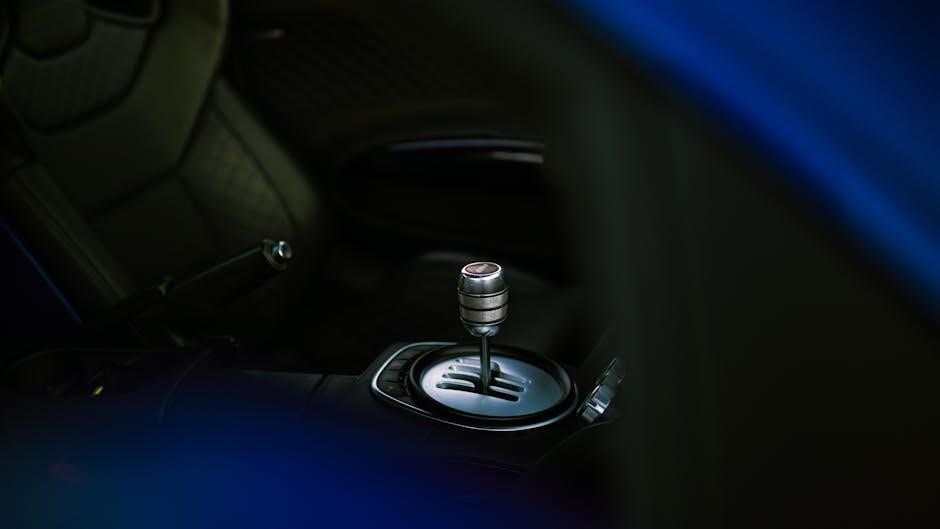
Community and Culture
The Honda Prelude has a vibrant community of enthusiasts who celebrate its legacy through meetups, forums, and shared modifications, fostering a culture of passion and innovation.
7.1 Honda Prelude Enthusiast Communities
The Honda Prelude has fostered a dedicated global community of enthusiasts who celebrate its performance, design, and heritage. Online forums, social media groups, and local meetups serve as hubs for owners and fans to share knowledge, showcase modifications, and connect with like-minded individuals. These communities often organize events, track days, and projects to preserve and promote the car’s legacy. They also provide valuable resources for maintenance, upgrades, and troubleshooting, making them indispensable for both new and veteran owners. The camaraderie and shared passion within these groups highlight the enduring appeal of the Honda Prelude, especially among those who appreciate its manual transmission.
7.2 Popular Modifications and Customizations
Enthusiasts often modify their Honda Preludes to enhance performance and aesthetics. Popular upgrades include suspension improvements for better handling, engine tweaks for increased power, and aftermarket exhaust systems for a sportier sound. Lightweight wheels and aerodynamic body kits are also common customizations; Many owners opt for engine swaps, such as installing a more powerful VTEC engine, to maximize performance. Interior upgrades, like sport seats and steering wheels, add a racing-inspired feel. Additionally, some owners install aftermarket transmissions or shorten gear ratios for improved acceleration. These modifications not only personalize the car but also showcase the community’s creativity and passion for optimizing the Prelude’s potential.
7.3 Events and Meetups for Honda Prelude Owners
Honda Prelude owners often gather at events and meetups to celebrate their shared passion for the vehicle. These events range from local meetups to larger national gatherings, providing a platform for enthusiasts to showcase their cars and connect with fellow owners. Many events feature car displays, performance demonstrations, and discussions about modifications and maintenance. The community’s camaraderie is evident at these gatherings, where owners share tips, experiences, and admiration for the Prelude’s legacy. Such events have become a cornerstone of the Honda Prelude culture, fostering a sense of belonging and preserving the car’s heritage for future generations of automotive enthusiasts.
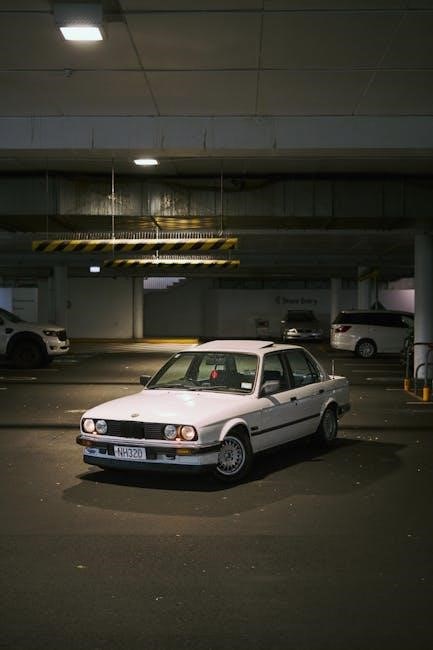
Future of the Honda Prelude
The 2026 Honda Prelude is set to return with a hybrid powertrain, offering a manual transmission option, blending efficiency with driving engagement, while staying true to its sporty heritage.
8.1 Rumors and Confirmed Plans for the 2026 Model
The 2026 Honda Prelude is confirmed to feature a hybrid powertrain, blending efficiency with performance. While details are emerging, rumors suggest it may retain a manual transmission option, appealing to driving enthusiasts. Honda aims to merge modern technology with the Prelude’s sporty heritage, potentially incorporating Civic-based tech. The hybrid system is expected to enhance fuel efficiency without sacrificing the dynamic driving experience. A front-wheel-drive setup is likely, with the manual transmission offering a tactile connection for purists. This revival aligns with Honda’s push toward electrification while keeping the Prelude’s legacy alive for future generations. Excitement builds as fans await official specifications and release timelines.
8.2 Hybrid and Electric Possibilities
The Honda Prelude is expected to embrace hybrid and electric technologies, aligning with industry trends. A two-motor hybrid system is likely, offering improved fuel efficiency while maintaining performance. This setup could mirror the Civic’s hybrid tech, ensuring a balance between power and eco-friendliness. While an all-electric version is rumored, Honda may prioritize hybrid models to retain driver engagement. The manual transmission’s future in hybrid Preludes remains uncertain but plausible, as it enhances the driving experience. Electric variants could debut later, catering to zero-emission demands. Honda’s commitment to innovation suggests the Prelude will evolve sustainably without losing its sporty essence, appealing to both enthusiasts and eco-conscious buyers.
8.3 How the Manual Transmission Fits into Future Models
The manual transmission remains a cornerstone of the Honda Prelude’s identity, offering a tactile driving experience that resonates with enthusiasts. In future models, Honda may integrate advanced technologies to enhance the manual transmission’s efficiency and performance. Hybrid systems could complement the manual gearbox, blending fuel efficiency with driver engagement. While automatic and continuously variable transmissions are prevalent, the manual’s appeal lies in its connection to the vehicle, making it a likely feature in high-performance trims. The balance between innovation and tradition ensures the manual transmission’s relevance, catering to both purists and modern drivers seeking a dynamic experience behind the wheel.
